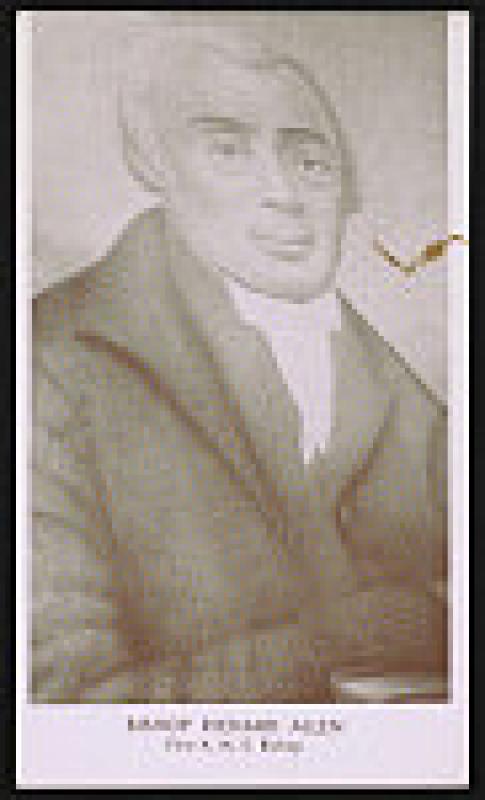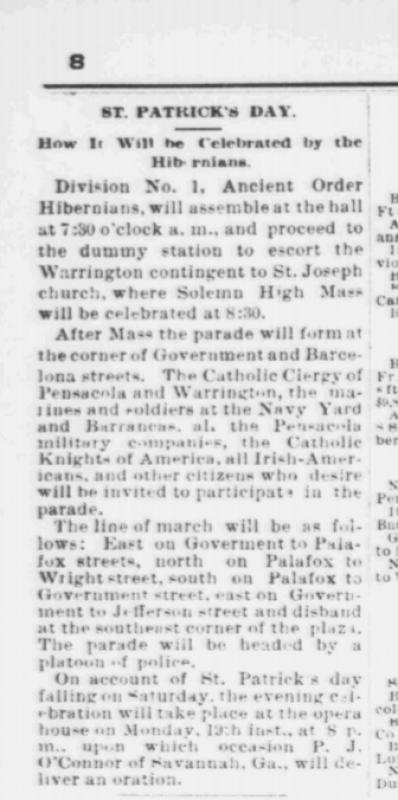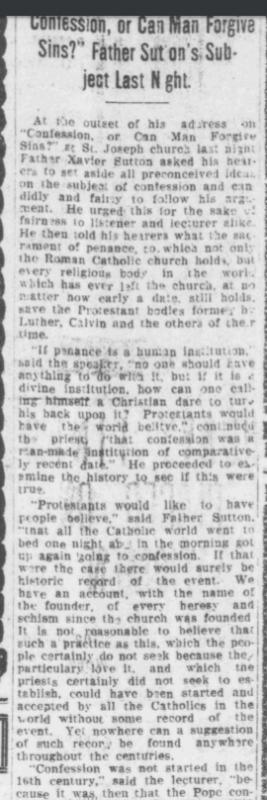Churches
Church life in the early 1900s was the main part of life for many people, including families of the port city of Pensacola. As stated in The Emergence of a City in the Modern South: Pensacola 1900-1945: “Church life was the major part of black family life,” as the churches provided stability and a safe haven for black communities. If the churches could not or did not want to pick up something the community wanted and needed, the benevolent societies would. These societies were the Masons, Odd Fellows, Knight of Pythias, Order of St. Luke, and the Good Samaritan, which would host events for the black community. These events would include parades, dances, and shows for the community to come and enjoy.
The churches came from around the United States and had many different locations. For the most part, while these churches may have been branches off of a main white church, they also are very likely to have been branches of branches, as many other similar churches are found in different parts of the country such as the St. Cyprian's Church in St. Augustine.
This caused overlap between the same type of church in various different locations. For example, the Allen Chapel Methodist Episcopal Church comes from Wisconsin and was named in honor of Richard Allen
who is known for establishing the African Methodist Episcopal Church in Philadelphia, Pennsylvania in 1787. Similar events happened for many of the other churches creating communities that follow a very similar path across the nation of the United States. The fact that these churches were in several different locations made it easier to move to another area/ city with a similar church or just a branch of the same church one would have gone to for most of their life.
Many events in every community revolved around church and what was going on at the churches.
St. Joseph’s was a creole church that used segregation encourage the creole to live a whiter lifestyle. The biggest denominations by the end of 1920 are that of the A.M.E and Baptist churches.
Several churches for African Americans did not show up in the Pensacola Journal at the time but did show up in city directories.
In the newspapers, several churches for African Americans are not mentioned as often as the St. Joseph’s, which was used for various activities including parades. Some churches had a second type of segregation where people of color would be allowed to attend but were put in another section of the church. St. Joseph’s is likely among this crowd, as it is worth mentioning that it has done something similar several times when Irish and German immigrants used the church.
Due to documents from the church meetings (in the A.M.E. case), we can assume that it is common to spread out the high ranking church officials from deacons to priests throughout the community to help ensure better understanding of the surrounding community, as this is talked about in the yearly meeting reports of the church. This was also seen in newspaper articles from their masses which are published. These members would more than likely also help spread the influence of the church by helping in various ways. The churches influence can be seen even in the newspapers of the time. Archdeacon Webber was mentioned in the Pensacola Journal as a reminder he would be conducting mass for St. Cyprian’s mission.
While St. Joseph’s had an article published about their preachers’ talking points on the difference between Catholic and Protestant religions.
These helped build the influence of the churches by giving people opportunities to join a mass or see how churches really think about each other.
While it is not immediately obvious which church Ezra Gerry did attend, it is easily directed more towards the A.M.E. church and the St. Cyprian’s church due to convenience and locations. Churches moved from location to location within the city, making it slightly harder than normal to make a guess.
Depending on how rooted in his beliefs he Ezra Gerry’s church attendance was could be anything from Gerry visiting all three churches to choosing one church to consistently attend. At worst, Gerry is known to have visited at least one of these churches in his lifetime, and at best he is known to have visited all three and known how to participate in the various denominations. Due to his job and the fact he moved up north, it is more likely that Gerry visited the A.M.E. church, which without a doubt had some effect on his life whether it be through friends or going to the church himself.
Further Reading:
McDonogh, Gary W., and Federal Writers’ Project. The Florida Negro: A Federal Writers’ Project Legacy. Jackson, Miss: University Press of Mississippi, 1993. Pg. 109-113.
McGovern, James R. The Emergence of a City in the Modern South: Pensacola 1900-1945. DeLeon Springs, FL: E.O. Painter Printing Co., 1976.





